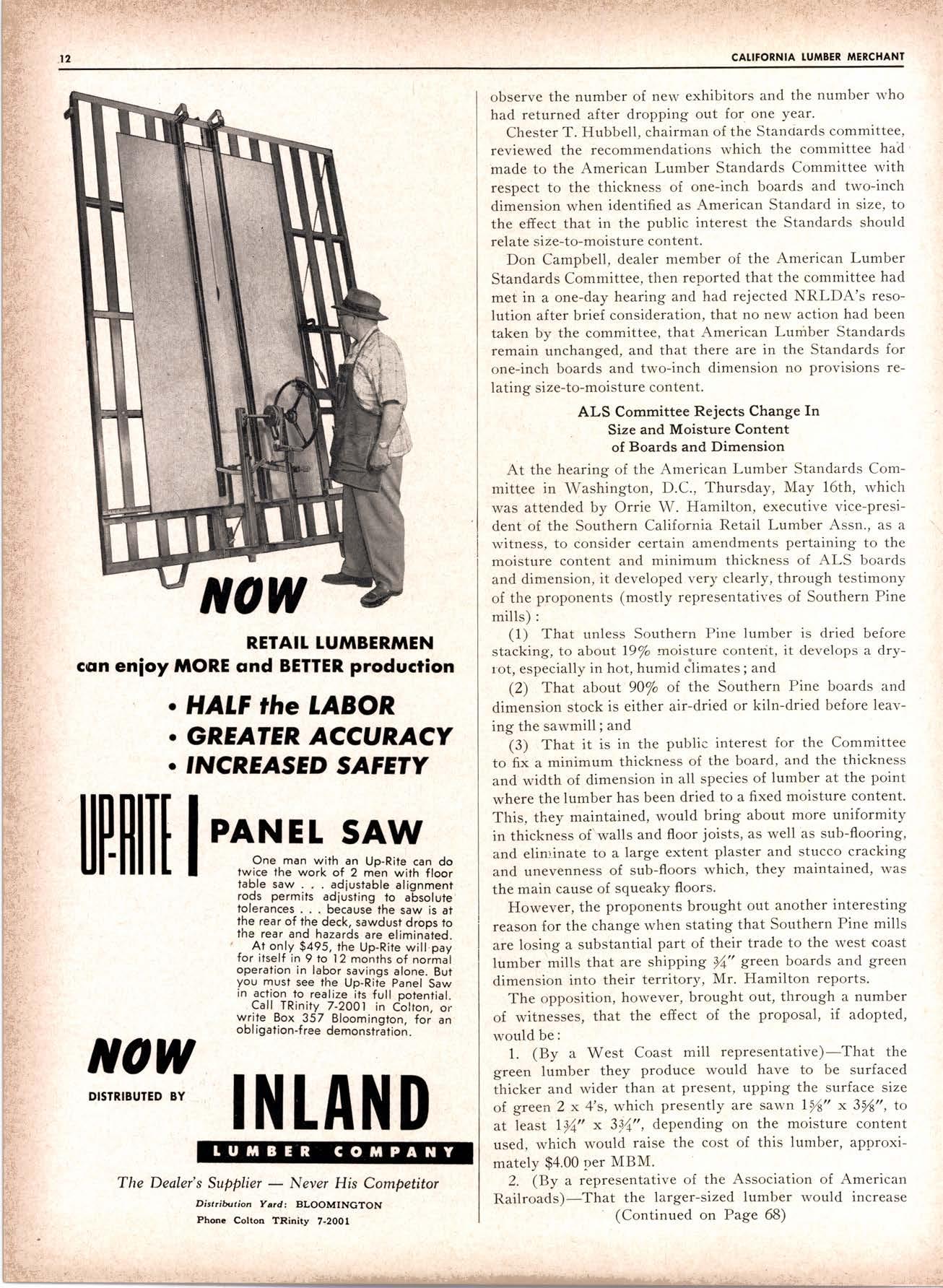
2 minute read
GREATER ACCURACV . 'NCREASED SAFETY tffi l':,.1^fr!,,*,if*H.,*
fable saw adiustable alignment rods permits adiusting lo absolute tolerances because the saw is af fhe rear of the deck, sawdust drops to the rear and hazards are eliminited.
' At only $495, fhe Up-Rite will oav for itself in 9 to l2 mohrhs of norhil operation in labor savings alone. But you must see lhe Up-Rite Panel Saw in aclion to realize its full potential. Call TRinity 7-2001 in Colion, or write Box .357 Bloomington, foi an obl igation-free demonstrition.
observe the number of new exhibitors and the number u'ho had returned after dropping out for one year.
Chester T. Hubbell, chairman of the Stanoards committee, reviewed the recommendations which the committee had made to the American Lumber Standards Committee with respect to the thickness of one-inch boards and two-inch dimension when identified as American Standard in size, to the efiect that in the public interest the Standards should relate size-to-moisture content.
Don Campbell, dealer member of the American Lumber Standards Committee, then reported that the committee had met in a one-day hearing and had rejected NRLDA's resolution after brief consideration, that no new action had been taken by the committee, that American Lumber Standards remain unchanged, and that there are in the Standards for one-inch boards and two-inch dimension no provisions relating size-to-moisture content.
ALS Committee Rejects Change In . Size and Moisture Content of Boards and Dimension
At the hearing of the American Lumber Standards Committee in Washington, D.C., Thursday, May 16th, rvhich was attended by Orrie W. Hamilton, executive vice-president of the Southern California Retail Lumber Assn., as a witness, to consider certain amendments pertaining to the moisture content and minimum thickness of ALS boards and dimension, it developed very clearly, through testimony of the proponents (mostly representatives of Southern Pine mills) :
(1) That unless Southern Pine lumber is dried before stacking, to about l9/o rnoisture conterit, it develops a dryrot, especially in hot, humid climates; and
(2) That about 90/o of the Southern Pine boards and dimension stock is either air-dried or kiln-dried before leaving the sawmill; and
(3) That it is in the public interest for the Committee to fix a minimum thickness of the board, and the thickness and width of dimension in all species of lumber at the point where the lumber has been dried to a fixed moisture content. This, they maintained, would bring about more uniformity in thickness of'walls and floor joists, as well as sub-flooring, and eliniinate to a large extent plaster and stucco cracking and unevenness of sub-floors which, they maintained, lvas the main cause of squeaky floors.
However, the proponents brought out another interesting reason for the change when stating that Southern Pine mills are losing a substantial part of their trade to the west coast lumber mills that are shipping /4" green boards and green dimension into their territory, Mr' Hamilton reports.
The opposition, horvever, brought out, through a number of witnesses, that the effect of the proposal, if adopted, would be:
1. (By a West Coast mill representative)-That the green lumber they produce would have to be surfaced thicker and wider than at present, upping the surface size of green 2 x 4's, which presently are sawn I%" * 35f", to at least l/q" x 3t/q", depending on the moisture content used, which would raise the cost of this lumber, aporoximately $4.00 per MBM.
2. (By " representative of the Association of American Railroads)-That the larger-sized lumber would increase (Continued on Page 68)









